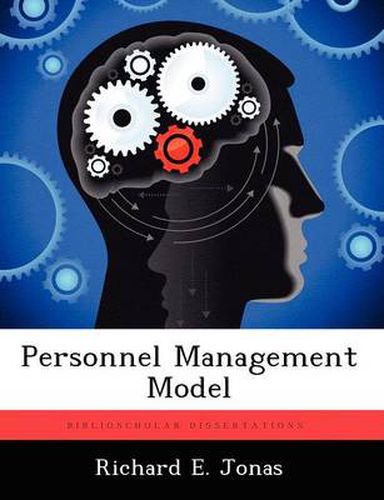Readings Newsletter
Become a Readings Member to make your shopping experience even easier.
Sign in or sign up for free!
You’re not far away from qualifying for FREE standard shipping within Australia
You’ve qualified for FREE standard shipping within Australia
The cart is loading…






This title is printed to order. This book may have been self-published. If so, we cannot guarantee the quality of the content. In the main most books will have gone through the editing process however some may not. We therefore suggest that you be aware of this before ordering this book. If in doubt check either the author or publisher’s details as we are unable to accept any returns unless they are faulty. Please contact us if you have any questions.
In the field of military personnel management, there is a need for an improved computerized model as a method of controlling personnel turnover. Such a model should provide the following: (1) Display gain/loss data and a monthly accounting of manning; (2) Show worst case projected manning levels; (3) Describe turnover in meaningful terms; and, most importantly, (4) Predict the impact of personnel turnover on combat readiness. In civilian enterprises, the personnel management community takes cognizance of many turnover considerations: morale, stability, cost, and organizational effectiveness, to name a few. However, little work appears to have been done in constructing and computerizing predictive mathematical models capable of presenting a clear picture of turnover and its effect. The military services, on the other hand, have studied the use of models for some time now. They have made some progress toward a model which meets the criteria specified above, although much remains to be improved in today’s models. The Air Force has made significant progress in this regard. This thesis articulates the necessity of turnover control, reviews what personnel managers have done up to now in computerized manning and turnover models, and proposes a Personnel Management Model which provides the features discussed above.
$9.00 standard shipping within Australia
FREE standard shipping within Australia for orders over $100.00
Express & International shipping calculated at checkout
This title is printed to order. This book may have been self-published. If so, we cannot guarantee the quality of the content. In the main most books will have gone through the editing process however some may not. We therefore suggest that you be aware of this before ordering this book. If in doubt check either the author or publisher’s details as we are unable to accept any returns unless they are faulty. Please contact us if you have any questions.
In the field of military personnel management, there is a need for an improved computerized model as a method of controlling personnel turnover. Such a model should provide the following: (1) Display gain/loss data and a monthly accounting of manning; (2) Show worst case projected manning levels; (3) Describe turnover in meaningful terms; and, most importantly, (4) Predict the impact of personnel turnover on combat readiness. In civilian enterprises, the personnel management community takes cognizance of many turnover considerations: morale, stability, cost, and organizational effectiveness, to name a few. However, little work appears to have been done in constructing and computerizing predictive mathematical models capable of presenting a clear picture of turnover and its effect. The military services, on the other hand, have studied the use of models for some time now. They have made some progress toward a model which meets the criteria specified above, although much remains to be improved in today’s models. The Air Force has made significant progress in this regard. This thesis articulates the necessity of turnover control, reviews what personnel managers have done up to now in computerized manning and turnover models, and proposes a Personnel Management Model which provides the features discussed above.